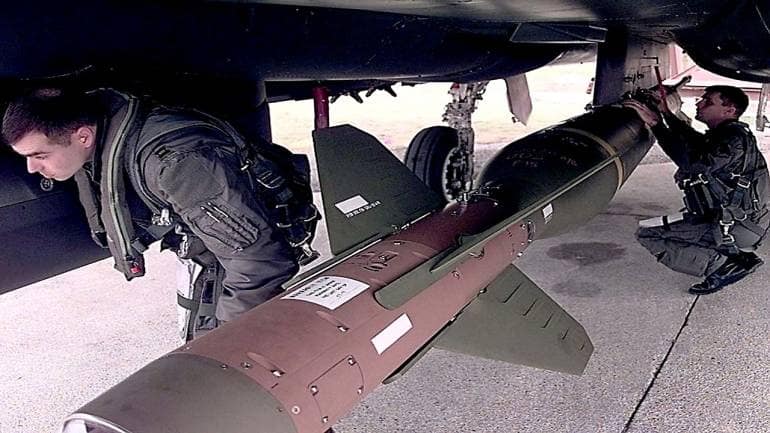



Israel announced the death of Hezbollah leader Hassan Nasrallah on September 27 following an airstrike in Beirut, a claim later confirmed by Hezbollah. The Israeli military executed a precision strike on a heavily fortified bunker situated nearly 60 feet underground, where Nasrallah and other senior members of the Iran-backed group were meeting to strategise against Israel, under pressure from Tehran to avoid immediate retaliation.
This operation, among the most significant strikes on an urban center in recent history, used nearly 80 tons of explosives, including about 85 specialised bunker buster bombs, to penetrate the bunker.
What are Bunker Buster Bombs?Bunker buster bombs, also known as ground penetration munitions, are specialised munitions designed to penetrate hardened targets or deep underground facilities, such as military bunkers. These bombs can anything weigh between 2,000 and 4,000 pounds and are capable of penetrating up to 30 meters of earth or six meters of reinforced concrete.
These bombs are loaded with explosives and equipped with delayed fuses, enabling them to detonate only after penetrating their target. This design maximised damage to fortified structures. The kinetic energy generated upon impact enables these bombs to drill deep into targets, effectively collapsing fortified structures.
The concept of bunker busters dates back to World War II. The Röchling shells, developed by German engineer August Coenders, were among the first advanced bunker-busting artillery, tested in 1942 and 1943.
 This US Air Force file image (March 12, 2003) shows pilots checking the GBU-28 bunker buster, a 4000-pound bomb designed to penetrate hardened targets before exploding. (Photo courtesy: AFP)Types of Bunker Busters Used:
This US Air Force file image (March 12, 2003) shows pilots checking the GBU-28 bunker buster, a 4000-pound bomb designed to penetrate hardened targets before exploding. (Photo courtesy: AFP)Types of Bunker Busters Used:Bunker buster bombs are designed to penetrate soil, rock, or reinforced concrete, thanks to their ultra-strong casings that withstand significant impact before detonating deep inside targets. They also feature advanced laser or GPS guidance for precise targeting, minimising collateral damage and increasing the likelihood of hitting key underground sites. Furthermore, these bombs, integrated with delayed fuses, explode only after penetrating the target, maximising damage to facilities like command centers and weapons storage depots.
Legal ConcernsWhile international law does not specifically ban bunker buster bombs, their use in densely populated areas raises substantial ethical and legal concerns. The Geneva Conventions prohibit actions that could result in mass civilian casualties, particularly relevant given the recent attacks in Beirut.
Following the airstrike, Iranian Foreign Minister Abbas Araqchi accused Israel of deploying US-made 5,000-pound bunker buster bombs in the attack, pounding civilian areas. The Israeli army claimed that Nasrallah was targeted in a strike on Hezbollah's central command located beneath a residential building. The attack reportedly resulted in civilian casualties and the destruction of six residential apartment complexes.
The US has a history of supplying bunker buster bombs to Israel over the years:
>> 2005: 100 GBU-28 bombs.
>> 2014: Additional bombs amid escalating tensions.
>> 2023: Over 1,000 bunker buster bombs as part of a $6.5 billion military aid package.
A 900 kg Mark 84 series bomb was employed in Israel's September 27 attack on Hezbollah's underground headquarters beneath a residential building in southern Beirut, as disclosed by Mark Kelly, chair of the Senate Armed Services Airland Subcommittee.
The Israeli military reported using nearly 80 tons of explosives, including 85 bunker-buster bombs capable of penetrating up to 30 meters of earth or six meters of concrete. As per the Times of Israel, the commander of the Israeli Air Force's 69th Squadron described the operation as "flawlessly executed, with no errors in intelligence, planning, or execution".
Discover the latest Business News, Sensex, and Nifty updates. Obtain Personal Finance insights, tax queries, and expert opinions on Moneycontrol or download the Moneycontrol App to stay updated!
Find the best of Al News in one place, specially curated for you every weekend.
Stay on top of the latest tech trends and biggest startup news.